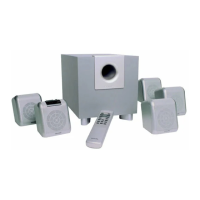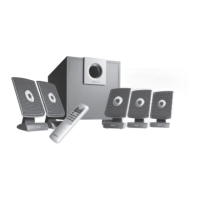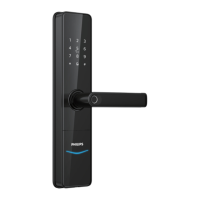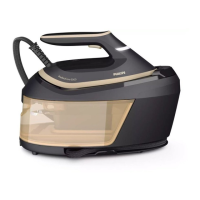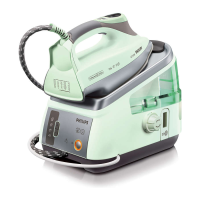45
12. Troubleshooting &
FAQs
12.1 Troubleshooting
This page deals with problems that can
be corrected by a user. If the problem
persists after you have tried these
solutions, contact a Philips customer
service representative.
Common Problems
No Picture (Power LED not lit)
• Make sure the power cord is
plugged into the power outlet and
the back of the monitor.
• First, ensure that the power button
on the front of the display is in the
OFF position, then press it to the ON
position.
No Picture (Power LED is White)
• Make sure the computer is turned
on.
• Make sure the signal cable is
properly connected to your
computer.
• Make sure the monitor cable has no
bent pins on the connecting side. If
yes, repair or replace the cable.
• The Energy Saving feature may be
activated Screen says
• Make sure the display cable
is properly connected to your
computer. (Also refer to the Quick
Start Guide).
• Check to see if the display cable has
bent pins.
• Make sure the computer is turned
on.
Visible signs of smoke or sparks
• Do not perform any troubleshooting
steps
• Disconnect the monitor from the
mains power source immediately for
safety
• Contact Philips customer service
representative immediately.
Imaging Problems
The image appears blurred, indistinct, or
too dark
• Adjust the contrast and brightness
on On-Screen Display.
An "after-image", "burn-in" or "ghost
image" remains after the power has
been turned o.
• Uninterrupted display of still or
static images over an extended
period may cause "burn-in", also
known as "after-imaging" or "ghost
imaging", on your screen. "Burn-in ",
"after-imaging", or "ghost imaging"
is a well-known phenomenon in LCD
panel technology. In most cases, the
"burn-in" "after-imaging" or "ghost
imaging" will disappear gradually
over some time after the power has
been switched off.
• Always activate a moving screen
saver program when you leave your
display unattended.
• Always activate a periodic screen
refresh application if your LCD
display will display unchanging static
content.
• Failure to activate a screen saver, or
a periodic screen refresh application
may result in severe “burn-in”,
“after-imaging” or “ghost imaging”

